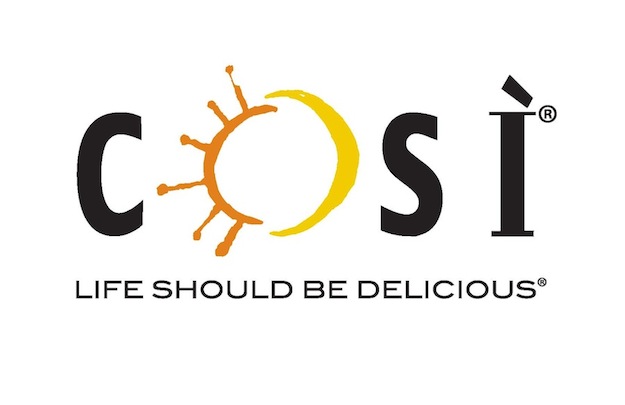Three Questions For Così’s New CEO

 Once again, popular restaurant chain, Così is in the news. On paper, the 17-year-old 130-plus-location company appears popular, but I’m really using the term lightly. Their fourth CEO since 2011, Stephen Edwards, just started and is already making waves. The struggling chain — who lost a whopping $2.1 million last year — is beginning to sound like the J.C. Penney of fast casual dining. The really terrible part of all of this — the turnover, the financial landslide, everything —is that Edwards is blaming it all on the staff. In a recent conference call he stated, bluntly that “People love our sandwiches, they love our salads. We hear it time and time again, it’s never a complaint. A complaint is because someone was rude to me, my sandwich or my salad was incomplete…or it took me 20 minutes to get my order when there was nobody else in the store.”
Once again, popular restaurant chain, Così is in the news. On paper, the 17-year-old 130-plus-location company appears popular, but I’m really using the term lightly. Their fourth CEO since 2011, Stephen Edwards, just started and is already making waves. The struggling chain — who lost a whopping $2.1 million last year — is beginning to sound like the J.C. Penney of fast casual dining. The really terrible part of all of this — the turnover, the financial landslide, everything —is that Edwards is blaming it all on the staff. In a recent conference call he stated, bluntly that “People love our sandwiches, they love our salads. We hear it time and time again, it’s never a complaint. A complaint is because someone was rude to me, my sandwich or my salad was incomplete…or it took me 20 minutes to get my order when there was nobody else in the store.”
Okay, Mr. Edwards, so it’s the staff’s fault? I had to see if the entire chain had really bad luck hiring, or if there was a larger problem at hand here. Could this be a branding issue; perhaps, something deeper that the employees can see through? If I were breaking flatbread with Edwards, these are the three questions I’d ask.
1. What do you stand for?
Brands have to be clear before they can be loved. Take a glance at Così’s menu. It’s incredibly overwhelming. Is Così a sandwich bar? A pizza bar? A salad bar? A coffee bar? A breakfast bar? Is it actually any type of bar? With 127 items on the menu – ranging from flatbread pizzas to sandwiches and soups, smoothies and square bagels (squagels), it’s impossible to know what Così is. The experience doesn’t scream any particular idea, the service model feels like many others in the category, the name is abstract to me and their product itself is just so-so. I don’t work in a restaurant anymore, but when I was younger I worked at P.F. Chang’s. When I went into work I knew what we stood for. The message there (they literally call it “The Message”) is that the customer is the lifeblood of the entire brand experience. I knew that I was to be truly glad people came in to spend time with us, so much so that I wanted to ensure they came back. The message is incredibly clear, more than a decade later I can still tell you what P.F. Chang’s is about and recite half the items on the menu (and I wasn’t even a server). If I had instead worked at Così, would I understand what we stood for? Would I need to be an expert smoothie maker on top of being a cashier and a barista? Do I need to explain why the coffee is suddenly self-serve, that we throw out the squagels at 11 and memorize 127 items? That sounds stressful. You need to know what you stand for and own it in a way that trickles down to your employees.
 2. How will you prove it?
2. How will you prove it?
A successful brand needs the anchor of an authentic idea. People want nothing to do with a brand that doesn’t proudly and transparently stand for something. On Così’s Facebook page, half the comments seem to be about the same two dishes: tomato basil soup and the T.B.M. sandwich. When Così started offering “bowls,” people got confused and took to Facebook. People know when you’re not being genuine, and if the tomato basil soup and the T.B.M. sandwich are your anchor, then how are you benefiting by veering so far off the product path? Look, Così, if you’re just trying to make money by pushing 127 menu items and counting, then own it. Make it be your brand. Or, if you’re trying to “serve the guest seamlessly in a sophisticated environment by providing a high quality product, service and experience” as your franchisee info page states, then for the love of God, do it and do it well. There is such great opportunity here to be seamless and sophisticated. Authenticity begets loyalty both internally and externally.

3. How can you look the other way?
Così’s Facebook page is well done. You can scroll endlessly, enjoying its conversational voice, lovely photos and contests. Its regularly updated presence boasts more than 31,000 followers. People rave about their meal and interact with the lovely images of food. However, while each note of gratitude and praise is reciprocated, nearly every complaint is met either with silence or a note to re-submit the dissatisfaction at a link. If a customer complaint is not taken seriously, would an employee’s concern even be heard? Perhaps they’ve tried, Mr. Edwards. If your brand’s goal is to be seamless and sophisticated, I would venture to guess that throwing your employees under the bus is not the place to start. By not listening to your customer or your employee you’ve missed an opportunity to back up brand values and express what your company stands for. That is, if you know what your company stands for.
I have one final note for Così’s new CEO. You’ve heard something like it before and it’s true. People will not remember the confusing fact that you started serving Korean rice bowls to go with their tomato soup, but they will absolutely recall how you, in a similarly baffling move, chastised all your employees because your brand is broken.


